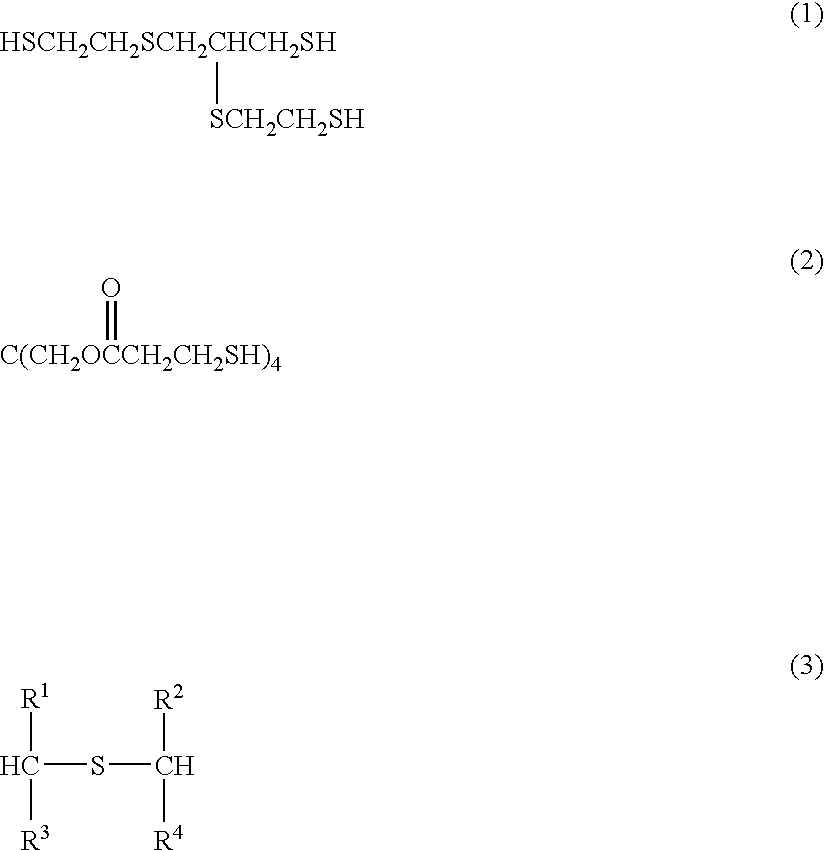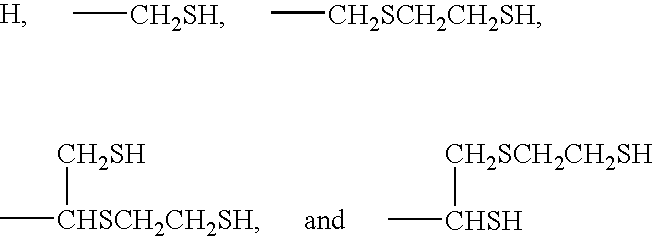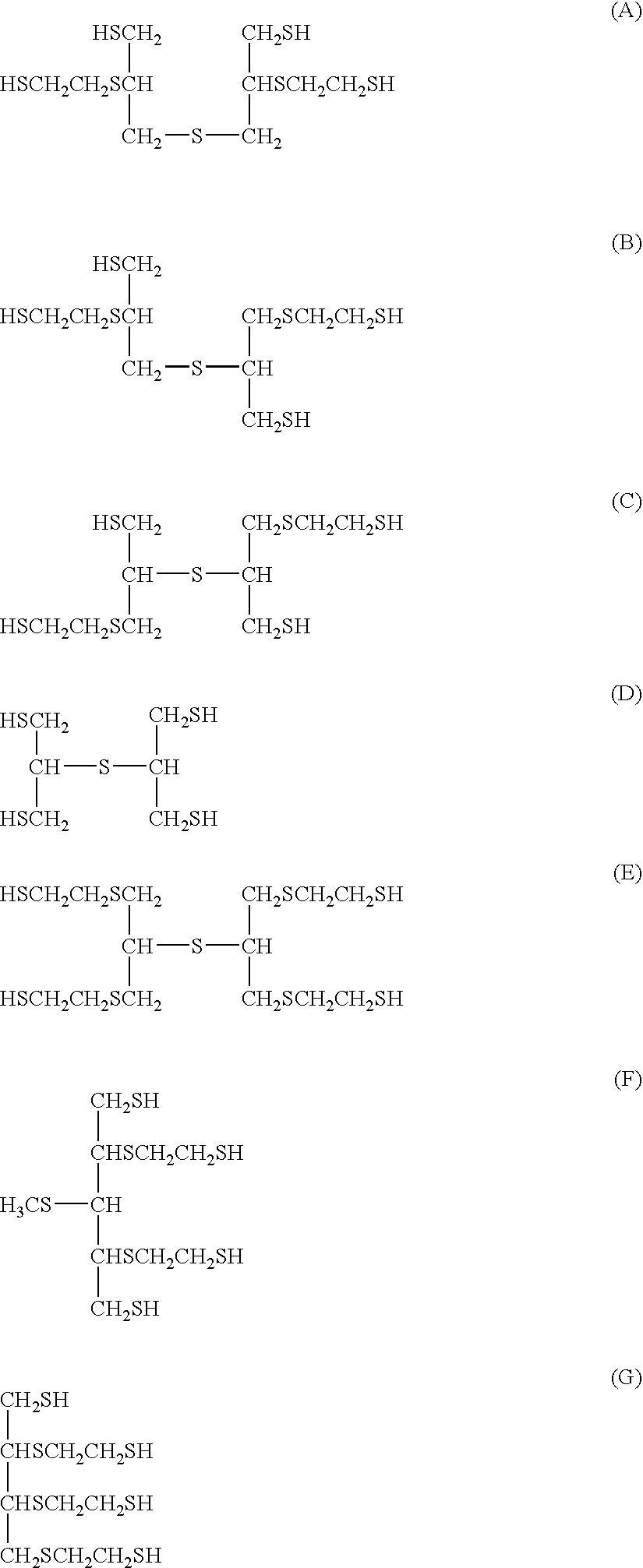Plastic lens and method for producing plastic lens
- Summary
- Abstract
- Description
- Claims
- Application Information
AI Technical Summary
Benefits of technology
Problems solved by technology
Method used
Image
Examples
examples
[0118]The present invention will be described in more detail with reference to examples below, which are not intended to restrict the scope thereof.
example 1
[0166]The above-mentioned H-1 solution was applied to a plastic lens with a refractive index of 1.67 by dipping (with a lifting rate of 35 cm / min). The plastic lens is a product of Seiko Epson Corporation made from the lens base material for Seiko Super Sovereign (SSV for short hereinafter).
[0167]Dipping was followed by air drying at 80° C. for 30 minutes and baking at 120° C. for 180 minutes. Thus there was obtained a hard coating layer, 2.5 μm thick. To the thus obtained lens base material was applied the above-mentioned C-1 solution by dipping (with a lifting rate of 10 cm / min). Dipping was followed by baking at 100° C. for 180 minutes. Thus there was obtained a lens with a low refraction film. The thickness of the coating layer was 90 nm and the refractive index of the coating layer was 1.37.
[0168]The thus obtained lens was tested for moisture resistance, weather resistance, surface layer adhesion, and scratch resistance according to the method mentioned above. The lens obtained...
example 2
[0169]The above-mentioned H-2 solution was applied to SSV by dipping (with a lifting rate of 35 cm / min). Dipping was followed by air drying at 80° C. for 30 minutes and baking at 120° C. for 120 minutes. Thus there was obtained a hard coating layer, 2.5 μm thick. To the thus obtained lens base material was applied the above-mentioned C-1 solution by dipping (with a lifting rate of 10 cm / min). Dipping was followed by baking at 100° C. for 180 minutes. Thus there was obtained a lens with a low refraction film. The thickness of the coating layer was 90 nm and the refractive index of the coating layer was 1.37.
[0170]The thus obtained lens was tested for moisture resistance, weather resistance, surface layer adhesion, and scratch resistance according to the method mentioned above. The lens obtained in Example 2 was satisfactory in all of moisture resistance, weather resistance, surface layer adhesion, and scratch resistance.
PUM
| Property | Measurement | Unit |
|---|---|---|
| Magnetic field | aaaaa | aaaaa |
| Magnetic field | aaaaa | aaaaa |
| Nanoscale particle size | aaaaa | aaaaa |
Abstract
Description
Claims
Application Information
 Login to View More
Login to View More - R&D
- Intellectual Property
- Life Sciences
- Materials
- Tech Scout
- Unparalleled Data Quality
- Higher Quality Content
- 60% Fewer Hallucinations
Browse by: Latest US Patents, China's latest patents, Technical Efficacy Thesaurus, Application Domain, Technology Topic, Popular Technical Reports.
© 2025 PatSnap. All rights reserved.Legal|Privacy policy|Modern Slavery Act Transparency Statement|Sitemap|About US| Contact US: help@patsnap.com



